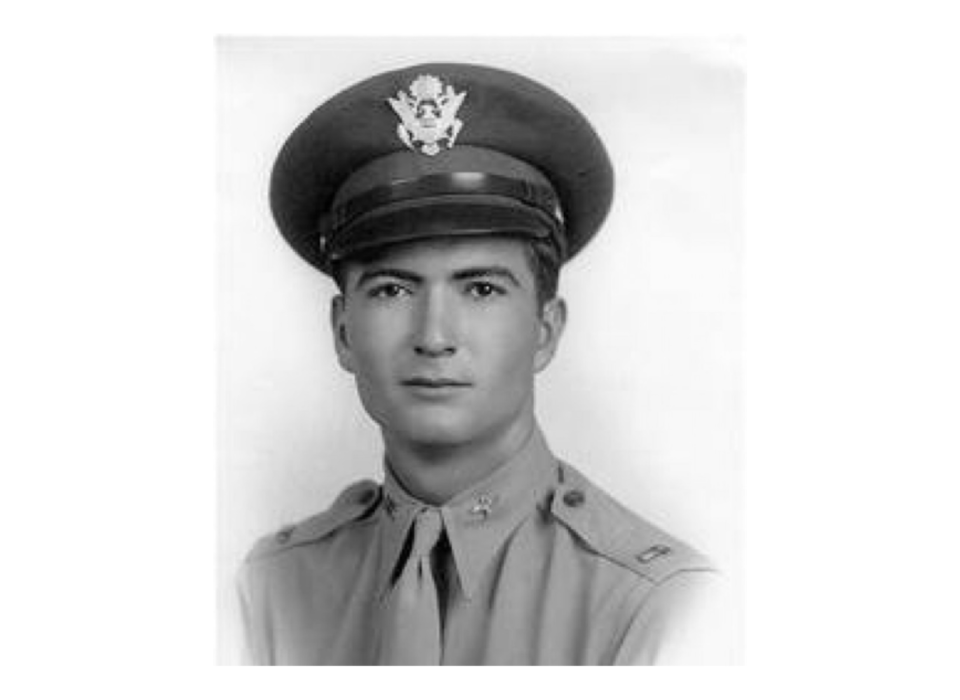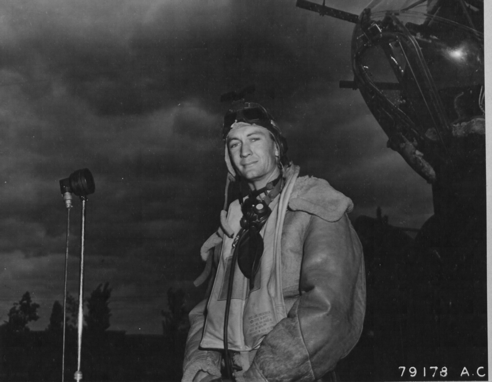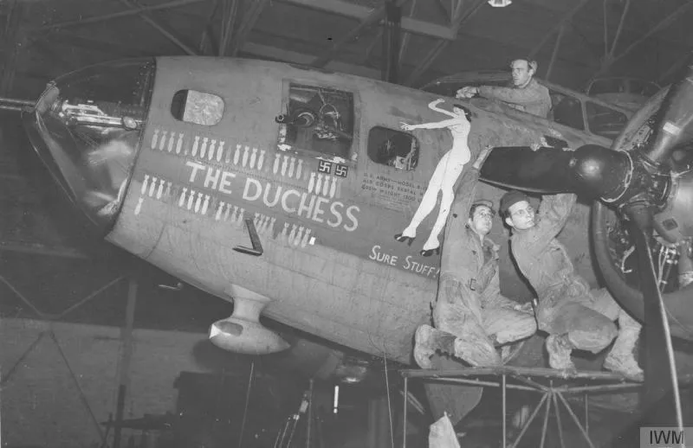Top image: Jack Mathis (Photo courtesy of the American Air Museum in Britain)
Jack Mathis was born the second of three children in San Angelo, Texas, on September 25, 1921. Jack enlisted in the Army before Pearl Harbor on June 12, 1940, at Fort Sam Houston, San Antonio, Texas. His initial assignment was to the First Field Artillery Regiment in Fort Sill, Oklahoma. With an interest in aviation, he subsequently applied for and received a transfer to the Air Corps. As a result, he became an aviation cadet at Goodfellow Field near his hometown of San Angelo and eventually trained as an Air Corps bombardier. His older brother Mark took a similar route and also earned the same aircrew rating.
Commissioned on July 4, 1942, Jack was sent overseas to Europe and served with the 359th Bombardment Squadron, 303rd Bombardment Group, of the US Eighth Air Force. Stationed at Royal Air Force Base Molesworth, he and his crew flew B-17 #41-24561, christened “The Duchess.” On March 19, 1943, Jack was on his 14th combat mission heading for a raid over the German submarine yards at Bremen. Designated his squadron’s lead bombardier for the strike, Jack was responsible for the aim of his unit’s seven planes that carried a mix of 1,000-pound bombs and M44 high explosives. Flying at 24,000 feet, Jack sighted the target using his Norden MK XV bombsight. As the formation approached the release point, German antiaircraft fire began. Jack’s citation explains his next actions:
“… flying through intense and accurate antiaircraft fire, [he] was just starting his bomb run, upon which the entire squadron depended upon for accurate bombing, when he was hit by the enemy antiaircraft fire. His right arm was shattered above the elbow, a large wound was torn in his side and abdomen, and he was knocked from his bombsight to the rear of the bombardier's compartment. Realizing that the success of the mission depended upon him, 1st Lt. Mathis, by sheer determination and willpower, though mortally wounded, dragged himself back to his sights, released his bombs, then died at his post of duty. As the result of this action, the airplanes of his bombardment squadron placed their bombs directly upon the assigned target for a perfect attack against the enemy. First Lt. Mathis’ undaunted bravery has been a great inspiration to the officers and men of his unit.”
With his devotion to duty and returning to his post, Jack helped destroy two-thirds of the shipyard that day. His Medal of Honor was the first awarded in the Eighth Air Force. However, this story does not end there.
Motivated by his little brother’s sacrifice and loss, Mark asked for a transfer to Jack’s crew in the 359th in order to take his place as their bombardier. With his request granted, on his fourth mission Mark and the rest of “The Duchess” crew failed to return after a successful bomb run over Kiel and crashed into the North Sea in May 1943. Jack was buried back at home at Fairmount Cemetery in San Angelo, while Mark was interred at the Netherlands American Cemetery and Memorial at Margraten, Netherlands.
Jack’s Medal of Honor is on display at the National Museum of the US Air Force at Wright-Patterson Air Force Base, Ohio. The sports center at Goodfellow Air Force Base was dedicated to him in 1966. To commemorate the brothers, the San Angelo Regional Airport was subsequently named “Mathis Field” in 1988. A plaque in the airport’s terminal building is dedicated to their memory and sacrifice.
John Curatola, PhD
John Curatola, PhD, is the Samuel Zemurray Stone Senior Historian at the Jenny Craig Institute for the Study of War and Democracy.
Cite this article:
MLA Citation:
APA Citation:
Chicago Style Citation:







![Max Fuchs, New York City cantor, sings as Rabbi Sydney [sic] Lefkowitz, Richmond, VA, conducts the first Jewish services from Germany.](/sites/default/files/styles/max_650x650/public/2025-10/image1.jpg)



